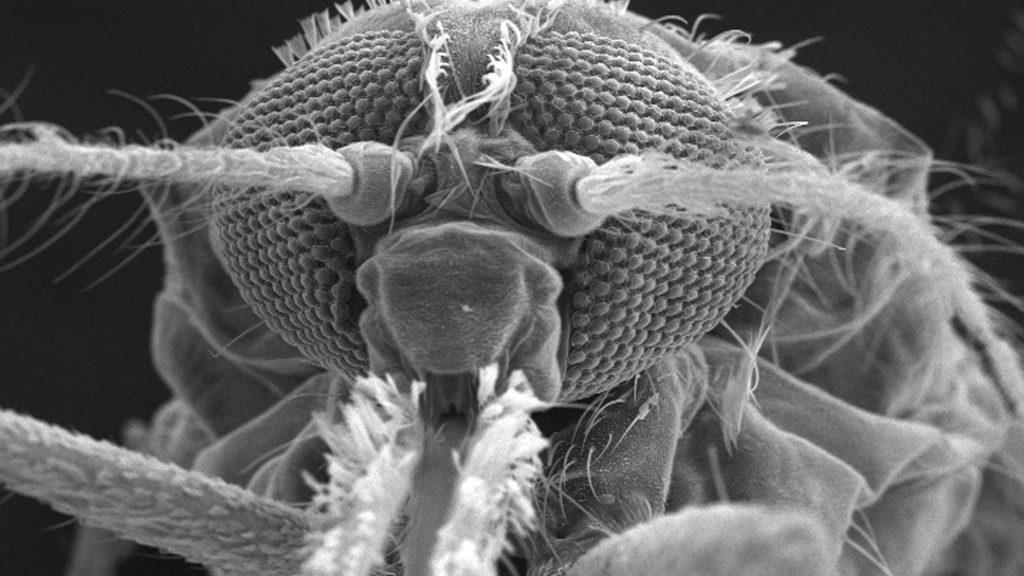-
Pretty Parasites With Dr. Pritt, part 5: Bad-news bugs
Parasites can be pretty: pretty cute, pretty awesome and sometimes pretty creepy. This is the final article in a five-part series featuring some of Dr. Bobbi Pritt's "freaky favorites", ranked from 1 (not too scary) to 5 (bad-news bugs).
Freaky factor 5/5: A no good, terrible, rotten, very bad disease.

There’s no getting around it: Malaria is super freaky and dangerous. It’s an illness caused by one of the deadliest parasites in the world, and nearly half of the people on planet Earth are at risk of getting it.

See those pretty purple specks in the picture above? Those are itsy, bitsy malaria parasites. They live inside red blood cells (the larger purple shapes). Malaria is most common in tropical places, although once upon a time it was common in the U.S. as well.

The way malaria passes from mosquitoes to people, and from people back to mosquitoes is complicated and kind of nifty. An uninfected mosquito gets infected by biting a person who has malaria.
Malaria causes shaking, chills, high fever and sweating. In 2016, scientists estimate that 216 million people had malaria and 445,000 people died from it. When traveling to a place where malaria is common, make sure to take preventive medicine before, during and after the trip. And sleep under a bed net to keep mosquitoes away at night. Malaria is deadly if not treated. It can be treated with a number of different medicines.
Related articles:
- Pretty Parasites With Dr. Pritt, part 1: The skinny on Ascaris worms
- Pretty Parasites With Dr. Pritt, part 2: Scalp explorers
- Pretty Parasites With Dr. Pritt, part 3: ‘Beaver fever’ creature feature
- Pretty Parasites With Dr. Pritt, part 4: Love bugs
Bobbi Pritt, M.D., is a pathologist and microbiologist at Mayo Clinic. She loves learning about parasites. You can read her blog, "Creepy Dreadful Wonderful Parasites" and follow @ParasiteGal.








